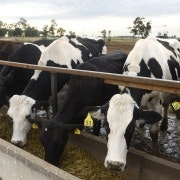Worries in the quarries as China cuts
The action of China's central bank in cutting official interest rates for the first time since the peak of the global financial crisis late in 2008 sends a mixed message. At one level it is positive, because it says the Chinese leadership is determined to shore up growth in the economy. It also says, however, that the leadership is worried.
We already knew that China's growth was slowing quite rapidly. The latest economic statistics, in April, showed an economy slowing far more quickly than was generally expected. Industrial production, retail sales, investment, imports, exports and bank lending all slowed sharply.
That was partly due to the global environment – Europe is China's largest export market and the US its second largest – but also reflects the "success" of China's own efforts, which started last year, to deflate a property-driven inflationary bubble. It now appears that those efforts might have been too successful.
China's Premier, Wen Jiabao, promised last month that the authorities would place more emphasis on stabilising China's growth rate, which has been threatening to fall below the 8 per cent level generally recognised as necessary to maintain social stability and to manage the continuing urbanisation of China.
The rate cut, following some relaxation of the reserve requirements for China's banks recently to try to stimulate lending, could be seen as the start of the delivering on that promise.
China's economic statistics for May, however, are scheduled to be released this weekend and the authorities are almost certainly already aware of their content. The rate cut could be interpreted, and is being interpreted, as a signal that the growth rate slowed even further, to the point where it has unsettled a Chinese leadership which faces a regime change later this year.
China does have a lot of firepower, monetary and fiscal, if it needs to deploy it. The rate cut, a modest 25 basis points, reduced the corporate lending rate from 6.56 per cent to 6.31 per cent. China has relatively low levels of government debt, a fiscal surplus and vast reserves.
During the first phase of the financial crisis it announced one of the biggest stimulus packages – approaching $US600 billion – of any economy on the globe. It could do something similar, albeit perhaps not quite as large, if necessary.
Given the continuing instability and economic weakness in Europe and the flat-lining state of the US – which combined represent nearly half the global economy – the investment and export-driven economic strategy China has traditionally pursued is faltering and a switch in emphasis towards domestic consumption hasn't yet been strong enough to sustain growth.
The rate cut, the encouragement to banks to lend more and an expectation that the authorities will reignite government spending on infrastructure would represent an attempt to accelerate the shift.
The success, or otherwise, of the Chinese in defending a floor of around 8 per cent in their GDP growth rate is of obvious consequence for the Australian economy, reliant as it is on the resource sector and in the midst of a massive investment boom in that sector.
The sharp falls in commodity prices as global uncertainty has increased and China's economy has slowed are, when combined with the escalating cost of new projects in Australia, already threaten some more marginal projects, both existing and in the pipeline. The big miners are slowing and deferring major new investments as their cash flows – which to date have been swollen by commodity prices rather than increased volumes – shrivel.
It is the investment and activity in the resource sector that is sustaining Australia's surprisingly strong economic performance, albeit at some cost to the non-resource sectors.
If China can defend the 8 per cent growth rate the boom will continue, albeit with somewhat lower prices and terms of trade than at its peak. If it can't, the pipeline of new projects will be curtailed, and some existing higher-cost projects aren't going to look too pretty.
















